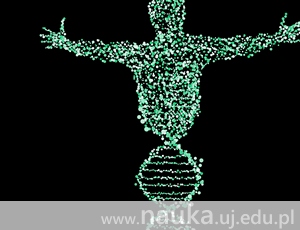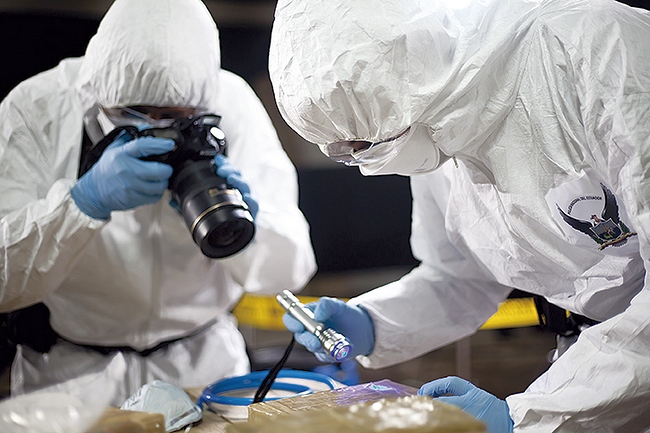
Crime scene. The perp’s long gone. There are no eyewitnesses, and the police don’t know who did it. Will the investigators be able to identify the criminal? Scientists from the Jagiellonian University are working on a project that will employ detailed DNA analysis to do just that.
The perpetrator usually leaves behind traces at the crime scene: blood, hair, saliva, sperm, fingerprints. Properly secured biological evidence can be genetically analysed to discover the unique DNA profile of a specific person.
However, when the perpetrator is unknown, they can’t be identified based on a standard analysis of genetic material. Currently, DNA profiling is only viable when the DNA recovered from a crime scene matches that of a potential suspect, who is either already part of an ongoing investigation or is featured in a police database. Still, there are cases in which none of the abovementioned conditions are fulfilled. An identikit created on the basis of genetic material would be an invaluable asset on such occasions.
Biological witness
 This inspired scientists to establish the VISAGE Project (VISible Attributes though GEnomics). Through their research, they aim to make it possible for the investigators to prepare an identikit of unknown perpetrators – featuring not only rudimentary information, like sex, age, hair and eye colour, but also more complex data such as ancestry and genetic conditions – solely on the basis of DNA profiling. This ‘biological witness’ will point the police towards the person or group of people most likely responsible for the crime.
This inspired scientists to establish the VISAGE Project (VISible Attributes though GEnomics). Through their research, they aim to make it possible for the investigators to prepare an identikit of unknown perpetrators – featuring not only rudimentary information, like sex, age, hair and eye colour, but also more complex data such as ancestry and genetic conditions – solely on the basis of DNA profiling. This ‘biological witness’ will point the police towards the person or group of people most likely responsible for the crime.
The VISAGE Consortium brings together specialists in genetics and sociology. Its comprises 13 pertners from academic, police and justice institutions of 8 European countries, such as Erasmus University Medical Center Rotterdam (The Netherlands), Innsbruck Medical University (Austria), University of Santiago de Compostela (Spain), Institut National de Police Scientifique (France), and Metropolitan Police Service (United Kingdom). Researchers from the Jagiellonian University, possessing many years of experience in the subject of DNA in forensics, also participate in the project. They are led by Prof. Wojciech Branicki, who is recognised as one of the world leaders in this field and is currently the head of the Human Genome Variation Research Group at the Małopolska Centre of Biotechnology.
As Prof. Branicki puts it, ‘The difficulty in predicting a person’s overall appearance lies in its genetic basis, including the still largely unknown role of ancestry and biological age. We theorise that in three years we’ll be able to create a prototype method of simultaneous prediction of three crucial aspects: facial and body features, age, and ancestry. The Polish team is focused on the relation between biological age and epigenetics – the influence of environmental factors on genes.
The project will increase our knowledge in the area of genetics and epigenetics, and will allow us to develop prototype research methods, and then implement and improve them. The information we obtain from genetic material will enable us to predict an unknown perpetrator’s appearance, which will make it much easier for the police to conduct their investigations.
Original text: www.nauka.uj.edu.pl





